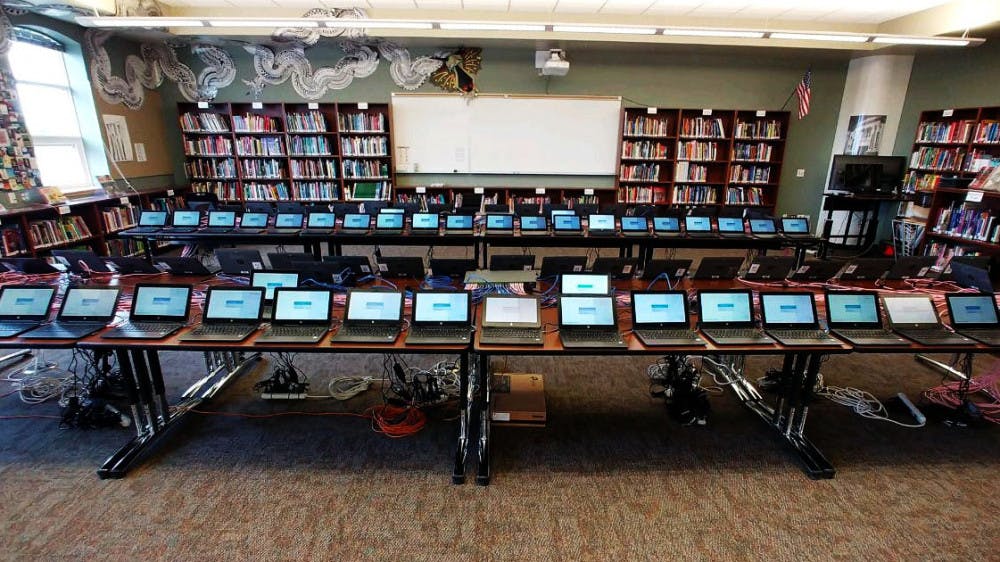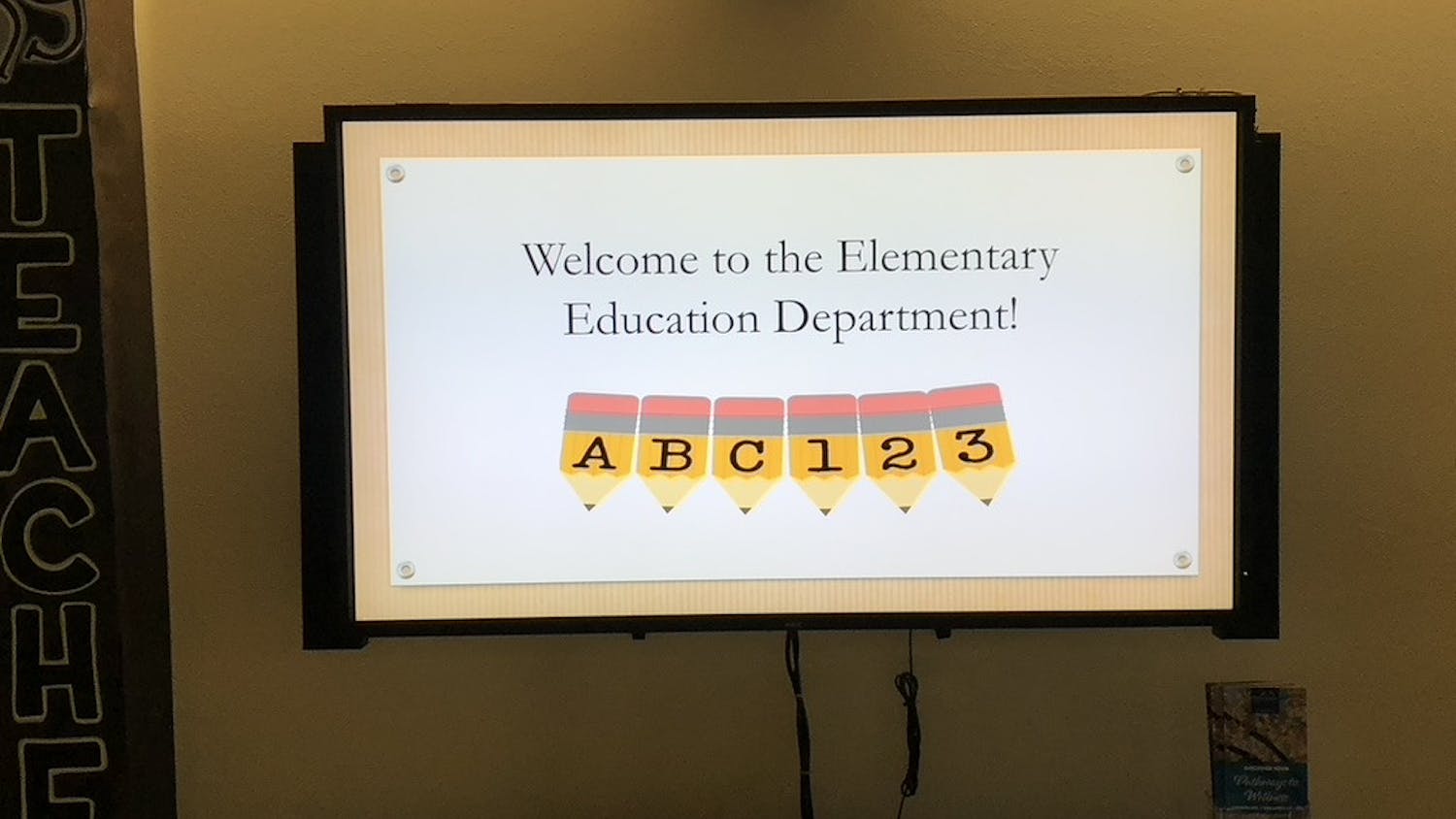
Bellingham Public Schools closed all school buildings on March 16 to comply with Gov. Jay Inslee’s executive order to close schools statewide to slow the spread of COVID-19. On April 6, the governor extended the closure order for the remainder of the academic year. A month and a half later, Bellingham students, teachers and parents continue to face the challenges of remote learning while access and equity questions remain.
The district, which includes 14 elementary schools, four middle schools and four high schools, serves approximately 12,000 students and 1,300 teachers, according to the district website. The school closures have presented challenges for families and school faculty alike, including a lack of access to technology, difficulty establishing communication and missing the school environment, said Dana Smith, communications manager for Bellingham Public Schools.
Making sure that students have access to technology remains a priority for the district, Smith said. Grades six through 12 were already using personal computers rented to them through the school district, so as long as those devices were functioning and maintained, those students already had access, Smith said.
For students in kindergarten through fifth grade, the district was able to gather devices from a variety of different classrooms, libraries and computer labs to loan out to students. Families can submit a technology request form to access devices from the district, which will provide one device per child, Smith said.
Families are able to pick the devices up at any of the 16 locations where the district is offering weekly meal boxes for families in need or request to get them delivered right to their doorsteps. So far, the district has connected students with around 3,000 devices, Smith said.
Some students also lack a reliable internet connection, even if they have a device, and relied on the internet connection at school to complete their work, Smith said. To combat that problem, the school district has partnered with Comcast to provide internet services to families in need during the school closures.
The access challenge is significant, Smith said, but the school district is committed to doing everything it can to provide assistance to students.
“I’m not going to sugarcoat it and say that this has been easy. This is really, really hard work, and every day there are new challenges,” Smith said. “We’re trying to be as creative and flexible as possible to get our families what they need.”
According to the Washington Office of Superintendent of Public Instruction (OSPI), almost 36% of students in the Bellingham School District are considered low-income. 3% of students are experiencing homelessness, 7% are english language learners and 16% are students with disabilities. These students need additional support and resources during the stay-at-home order, Smith said.
The Washington Office of Superintendent of Public Instruction has advised that during the school closure, the continued learning at home should reflect inclusionary practices already used in schools for students with disabilities. This means that students should feel a sense of belonging, have access to equitable and meaningful instruction, and receive instruction that is culturally responsive and student centered, according to OSPI.
There has been one challenge for teachers that Smith has heard over and over again the past two months.
“The teachers miss the students,” Smith said. “The Bellingham School Promise core belief is that all children should be loved, and our teachers really create that.”
Justin Reich, an associate professor at MIT and author of a recently published Remote Learning Guidance report, said that this pandemic is emphasizing equity issues around the country.
“The one thing which is clear is that all of this is much easier in affluent places and much harder in less well-resourced places,” Reich said. “Everyone is having their own pandemic. It’s important to realize that loud voices may not be representative.”
There are many factors that influence whether a student or family is able to succeed in schooling from home or not. Some of these include available connections to strong internet capabilities, the presence of a parent or supervisor for the student and the student’s executive functioning skills, Reich said.
The report, which summarizes guidance for remote learning from state education agencies across the country, outlines three major goals for schools to promote successful learning during a pandemic: keeping equity concerns at the center of planning and guidance with increased emphasis on special populations, acknowledging the challenge and constraints that come with learning at home with remote learning and communicating information clearly for multiple possible audiences.
The remote learning platforms that have been set up are not online learning so much as they are coached homeschooling, Reich said. If the parents of young children are essential workers and unable to work from home, it is difficult to facilitate their schoolwork. The pandemic has also created increased levels of stress that come along with economic uncertainty, and not all families will be able to prioritize learning from home, Reich said.
There is also a variety of teaching styles educators are experimenting with, ranging from relaxed policies and deadlines to more heavily emphasised work schedules, and there is no perfect combination of strategies that will work for all students, Reich said.
When all of this is over, we may never know what teaching strategies worked and what didn’t, Reich said. There are so many factors influencing how students perform during this time that it is impossible to make definitive claims. Reich thinks it will be challenging enough to know what was actually done.
“Actually, I think it’s going to be hard to figure out what actually happened,” Reich said. “It’s not that hard to figure out what districts or schools say the policy should be, but it can be a lot harder to figure out what is actually happening in a third grade earth science class.”
Parents are also struggling with learning from home. Amy Eolande, a parent of five children ranging from seven to 14 years old in Bellingham, has struggled to facilitate their online learning. The assigned school work does not seem to be required, she said, and motivating her children to do work that seems unessential has created avoidable conflict.
“We know that they don’t have to do it,” Eolande said, saying that the younger students will still pass if the work they’re assigned goes undone. “The teachers are wonderful, and maybe they wouldn’t necessarily agree that that’s how they want it to be perceived, but I think that that is the reality.”
Eolande said that the teachers and district have been making the best choices they could given the situation. In an ideal world, she wishes teachers could check in with their students every day with a video call, but she understands that the teachers do not have the capacity for that.
“I know that’s not realistic and I don’t even remotely expect them to do that, but it would be amazing,” Eolande said. “If the kids were face-to-face with the people they were accountable to for specific assignments that would change the situation.”
Bellingham Public Schools understand that parents and students may struggle with online learning, and that’s okay, Smith said.
“Do what you can right now and we’ll be ready to work with your child where they’re at when they come back to school, whenever that is,” Smith said.





